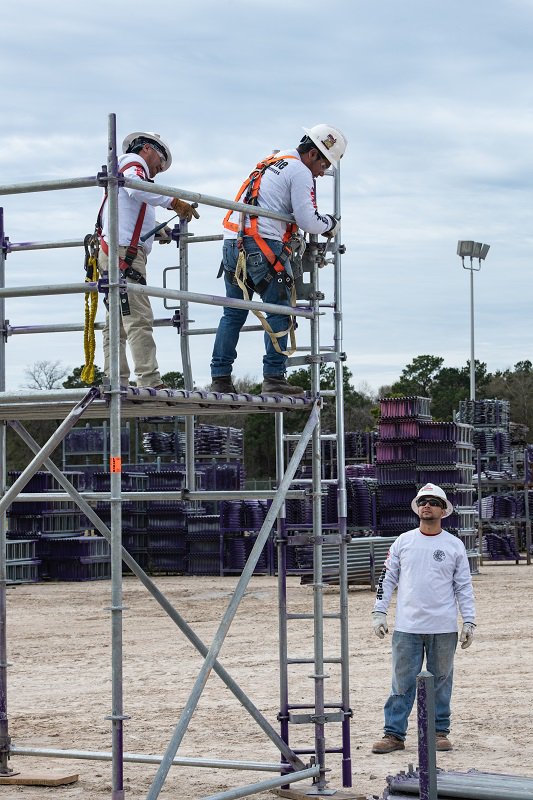Leaders often find their businesses bucketed into neat categories for review, analysis and benchmarking. Industries are assumed to be asset intensive, capital heavy, high or low margin, or cyclical. What leaders of the fastest- growing businesses across all categories are starting to realize is a single characteristic is more closely aligned with success, safety and permanence than any of these ancillary business descriptors. The quality and capability of an organization’s people trump financial engineering, capital structure or strategic direction when it comes to productive deployment of resources in advancing the organization’s mission.

Jeff Fitlow
How can leaders take stock of their companies’ people, and motivate and leverage what is in fact their greatest asset? Great companies recognize individual worth and motivation within the aggregation of pooled efforts, whereby shared understanding results in united outcomes. That insight comes with the recognition we operate in a highly connected world, but are faced with distractions and disruptions that work to misalign the efforts connecting the workforce to their desired outcomes.
“The hallmark of our company is our people and our understanding of how important they are, not only to our customers, but to our success. We are clear that the assets of Apache walk in and out the door every day. They are not attached to the shop floor,” shared Mike Knigin, CEO of Apache Industrial Services. “We let them know about the Apache Way, and we let them know how important they are to who we are. It is never lost on us who drives our performance: the men and women on the frontline.”
Today’s data-driven world has significantly reduced the information asymmetry that, at one time, would hide mistakes and missteps. Just like the large tech companies currently being lambasted for stealing information, manufacturing conflict or sowing doubt, individuals can tell when their leaders and companies are authentically concerned for their well-being and when leaders are merely paying lip service to core cultural tenets like safety, community and environment. In this way, a safety engagement campaign or to-do checklist cannot replace the power of a committed leadership team or an intentional culture that fundamentally embraces safety. Companies where HR is perceived to protect the company’s interests have lower performance than companies where employees trust they come first.
The intentionality of how a company is designed and how it is engaged across all facets of the workforce often determines its ultimate level of success. Too many organizations are constructed with inherent conflict at the core. Those companies say the right things, but often what they say is not what they mean. In those organizations, there is inherent conflict between divisions, with no one empowered to stand up and speak out. It is far easier to get along without any real truths being exposed or challenged. These companies embrace a compliant rather than a committed leadership style. And when compliance is accepted as the highest standard, employees are reduced to numbers, not elevated to the individuals they are.
“It is never what we say but rather what we do for and with our people that defines our relationship,” Knigin said. “Our people know that we are committed to them, to their success and, most of all, to their safety. Sure, we tell them, but it is way more powerful when we show them.”
‘The power of the personal’
Part of recognizing “the power of the personal” is to empathize and humanize the way leaders lead and connect. Leaders can share information through every communication channel available in the modern workspace. But great leaders recognize it is more than communicating and engaging — it’s personal, and the more personal they can make it, even in the largest and fastest-growing companies, the more successful not only they are, but their people are. Your people know when they are the priority.
When leaders recognize that success is about their people, they will begin to look deeper and understand the motivators as well as the distractions that can sap motivation and attention. So, while it is important to draw a distinction between the workplace, the home and the in-between “third place,” it is also critical the workplace understands, addresses and displaces outside circuit breakers that can drain personal energy. Ambivalence or boredom about tasks and motivation can result from a lack of leadership attention on what is most important to their people. It is critical the workforce get home safe and whole every day. It is also important they have an attachment to their work and an authentic pride in their company. Part of pride is understanding the direction, vision and decisions of the company. Another part is working hard to remove conflict and doubt from team interactions. Training, teambuilding and engagement all work together toward building a shared understanding of circumstance and removing the interpersonal triggers that disconnect the workforce from priorities and from each other.
There is much current research that demonstrates the importance of creating a psychologically safe organization. It is one of the most critical factors for ensuring a workplace in which people thrive and feel safe to do the right thing. The provision of appropriate resources and a conscious reduction of stress reduce fear, and a reduction in fear directly correlates to increased engagement and safety.

Jeff Fitlow
“We cannot say it enough: Our people are our only constant. We know that they define us and, in turn, count on us to lead and provide the safest environment for them to work, to learn, and to support customers and each other. When we can define what we expect from them, they go out of their way to achieve it,” said Knigin. “We have learned that it is paramount to ensure an environment where each person feels empowered to speak up and to trust each other.”
There are many ways a psychologically safe organization can choose to continue to invest in its people. Consistently recognizing and reinforcing the positive attributes of the individual as a reflector and contributor to the positive outcomes of the company is important. More and more, leadership is about building up employees through recognition of great work that is consistent with the company’s values and expectations. People want to belong to something bigger than themselves, and by recognizing contributions, leaders are able to build their teams up and bring them closer to the core, ensuring greater continuity, consistency and success.
Additionally, building relationships across departments, levels, backgrounds and experiences helps pollinate and grow richer understanding. Creativity and flexibility in addressing problems builds trust and, perhaps more importantly, safe environments to innovate and learn. Courage, be it in expressing 100 percent of the truth or striving for what is difficult, demonstrates a grit and willingness to do the work to be successful. Leading change, whether in growth or retrenchment, sets an example worth understanding and following.
There will always be an external demand for more — more investment, more customers, more movement, more money. What we are finding is in this environment of “more,” the companies that grow fastest and grow sustainably do so in an environment not of “more” but of “better.” The innovations that move organizations, save lives and change communities are those that help better people. Increased personal understanding and achievement lead to better performance: The personal change builds better personnel, and the personnel change builds better business. It is why some companies, no matter what bucket they are in, grow faster, last longer and perform better. They have figured out their business is always a people business, and that it is not only personal — it is personnel.
For more information on performance, contact Apache Industrial Services Director of Performance Brad Deutser at (713) 899-9766 or bdeutser@apacheip.com, or visit www.apacheip.com.

